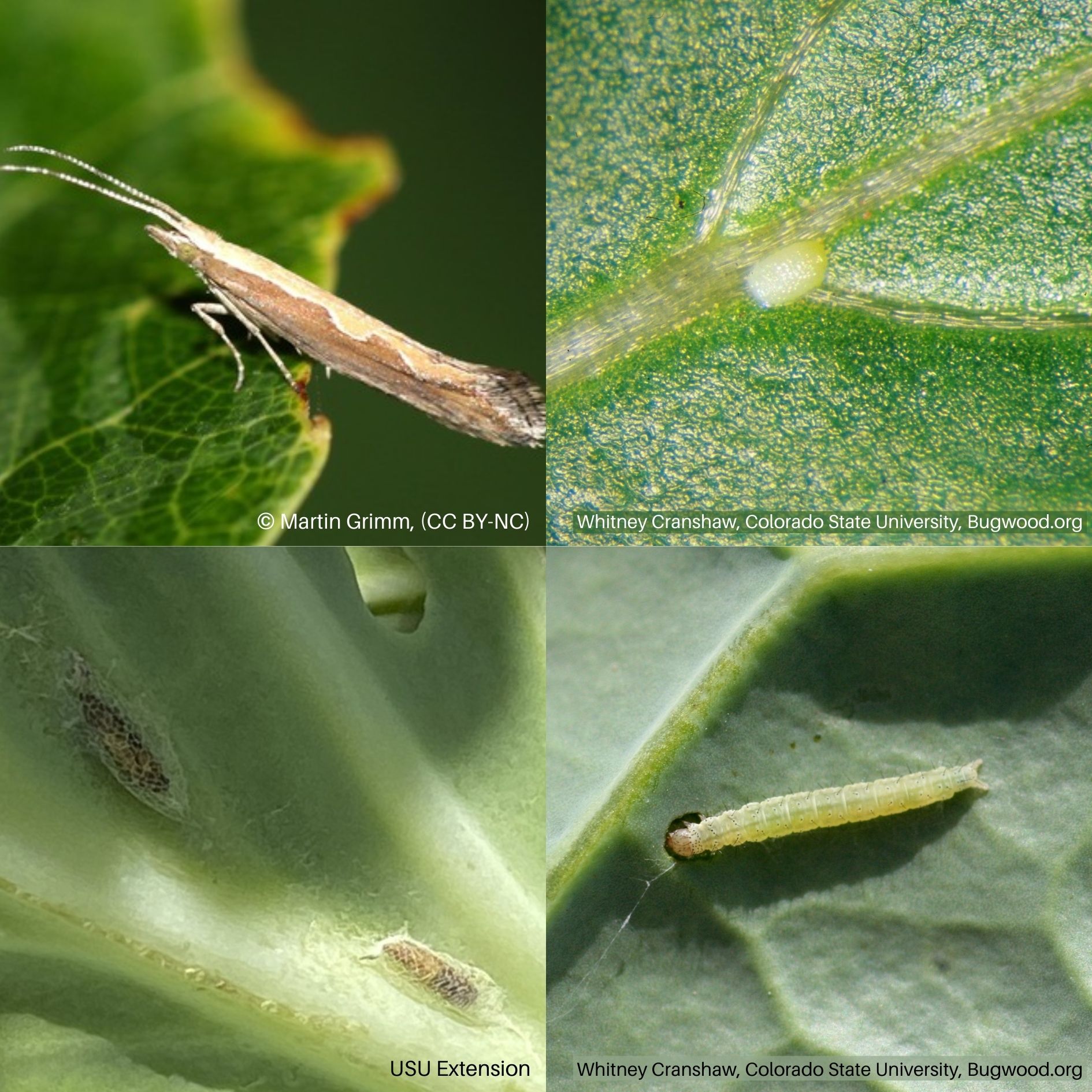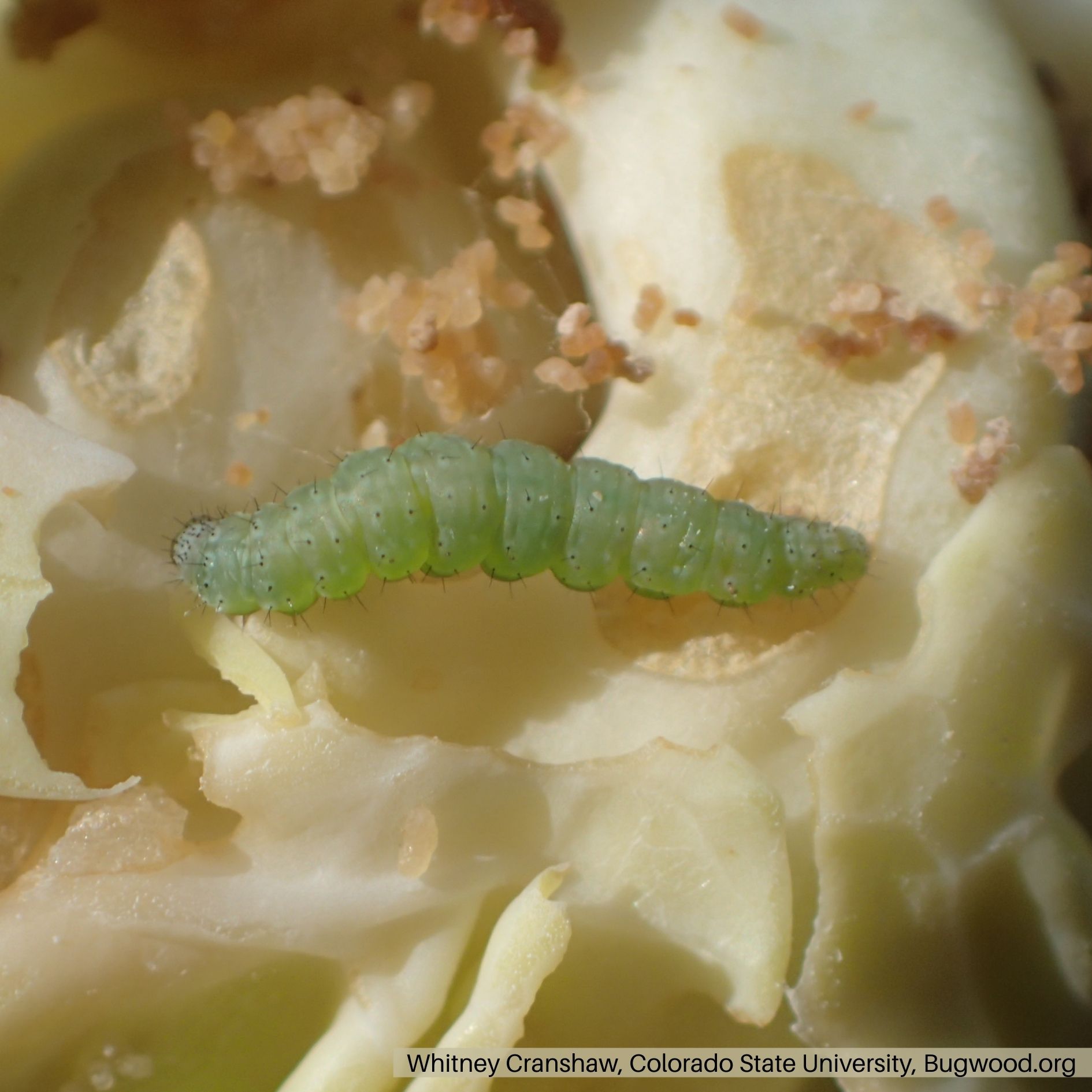Diamondback Moth
 Diamondback Moth Life Stages
Diamondback Moth Life Stages Diamondback Moth Larvae Feeding on Cabbage
Diamondback Moth Larvae Feeding on Cabbage Diamondback Moth Caterpillar Feeding on Brussel Sprouts
Diamondback Moth Caterpillar Feeding on Brussel Sprouts Diamondback Moths on a Sticky Trap
Diamondback Moths on a Sticky TrapHOSTS
- Brassicas
- Leafy Greens
DESCRIPTION
Diamondback Moth (Plutella xylostella) larvae are greenish-grey, and smooth with no stripes. They are a half inch long. Pupae are green and develop in a loosely spun,
lace-like cocoon that is attached to the leaves or stems. Adult moths are grey-brown with white/cream diamonds.
BIOLOGY
Egg | Larva | Pupa | Adult
Diamondback moths overwinter as adults in trash and debris in and around crop fields. Adults are migratory in northern Utah and resident in southern Utah. Larvae develop through through 4 instars and will pupate in a loose mesh cocoon on the host plant foliage. There are 4-6 generations per year in Utah.
SYMPTOMS
The larvae chew holes in leaves, and may occasionally cause serious defoliation. As caterpillars mature, their feeding intensifies, and they often move into the developing heads. Feeding damage often consists of the removal of all leaf tissue except the leaf veins, sometimes referred to as "window pane" damage. Larvae may also leave frass (fecal material) on plants.
SCOUTING
- Regularly monitor plants for larvae and pupae and the characteristic "window pane" foliar damage.
- Pheremone traps specific to diamondback moths attract adult moths to be counted.
- Check field edges in areas near fields or weeds that had high diamondback moth populations. Adults commonly migrate to new areas from fields that have recently been harvested or disced under.
GENERAL MANAGEMENT
- Hand remove caterpillars.
- Use floating row covers.
- Plant tolerant crop varieties.
- Clean growing sites of plant debris after harvest.
- Manage weeds to remove overwintering sites for pupae.
INSECTICIDES
Diamondback moths are known to develop resistance to some insecticides. It is crucial to rotate insecticides groups to prevent the further resistance from being developed.
Insecticides containing Bacillus thuringiensis var. kurstaki (Bt) and spinosad are effective in suppressing diamondback moth larvae.

